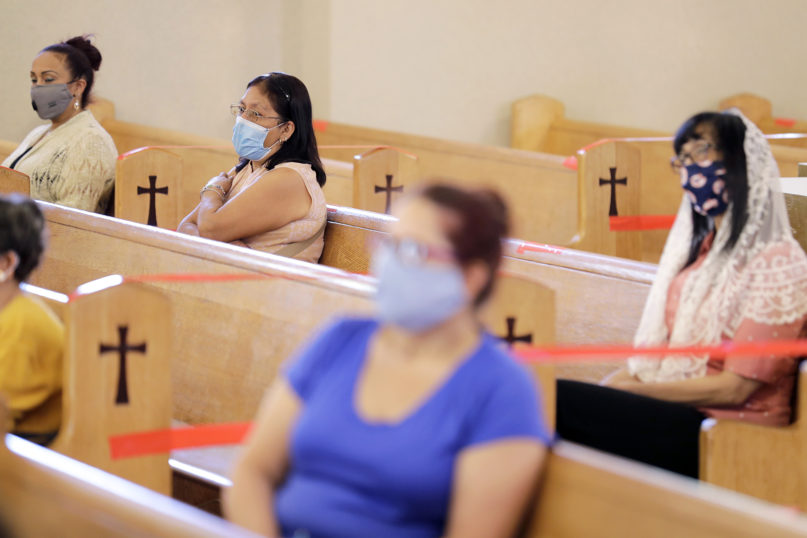(RNS) — Is epidemic disease a spur to religious practice? Not, it seems, in the United States.
The great influenza pandemic, which carried off an estimated 675,000 Americans after World War I, did nothing to reverse the secularization of American culture that had been underway since the late 19th century. Indeed, the 1920s and 1930s were a period of religious depression in the U.S.
A century later, the COVID-19 pandemic swept over America amid a decades-long religious decline as the percentage of adults who claim no religious identity — the nones — rose from the single digits in the 1980s to a quarter of the population.
In a just-released survey, Public Religion Research Institute reports that between 2020 and 2022 the proportion of nones jumped 15%, from 23.3% to 26.8%. That’s the largest two-year increase registered by PRRI since it began measuring in 2006.
Correlation is not causality, of course, but when it comes to the gold standard of religious commitment — in-person worship attendance — COVID-19 was most definitely the causal factor. Whether voluntarily or under orders from their governments or simply because their churches had closed, a large number of Americans stopped attending after the pandemic hit — and many have not returned.
According to Pew, in July 2020 just 13% of American adults said that they had attended religious services in person or both in person and virtually (online or on TV) within the past month. Twenty-seven percent said they only attended virtually. That contrasted with self-reported pre-pandemic weekly in-person attendance in the high-30% range.
By last November, in-person and hybrid worshippers had grown to 28%, while the exclusively virtual attendees shrunk to 12%. By Pew’s count, the retreat of COVID-19 as a major societal concern thus left in-person worship attendance well short of pre-pandemic levels.
Those numbers need to be taken with a grain of salt. Americans have long tended to overstate their worship attendance, just as they tend to overstate other forms of “proper” civic behavior, such as voting. In the early part of this century, when phone surveys had 40% of Americans going to church weekly, on-the-ground researchers found the actual percentage to be in the low-20s.
The PRRI survey, for its part, reports that between 2019 and 2022 the proportion of Americans who attended religious services at least a few times a year declined from 54% to 43%. I’ll bet both numbers are too large.
But whatever the true percentages are, there’s no question that in-person attendance has dropped significantly. Whether that is compensated for by at-home screen-watchers, as the Pew data suggest, remains to be seen.
“At the congregational level it’s pretty clear that fewer people are attending, even if you factor in virtual attendance,” said Scott Thumma, director of the Hartford Institute for Religion Research, which is currently conducting a granular study of the impact of COVID-19 on congregations.
From the accelerating rise of the nones to the latest shrinkage of the Southern Baptist Convention, from the precipitous drop-off of Catholic Mass attendance to the decrease in in-person worship in Black Protestantism, the country’s withdrawal from institutional religion quickened during the COVID-19 crisis.
In place of their once vaunted religious exceptionalism, Americans may turn to the third stanza of the Victorian poet Matthew Arnold’s “Dover Beach”:
The Sea of Faith
Was once, too, at the full, and round earth’s shore
Lay like the folds of a bright girdle furled.
But now I only hear
Its melancholy, long, withdrawing roar,
Retreating, to the breath
Of the night-wind, down the vast edges drear
And naked shingles of the world.
Not to mention Arnold’s final lament for a world: “Swept with confused alarms of struggle and flight, / Where ignorant armies clash by night.”






